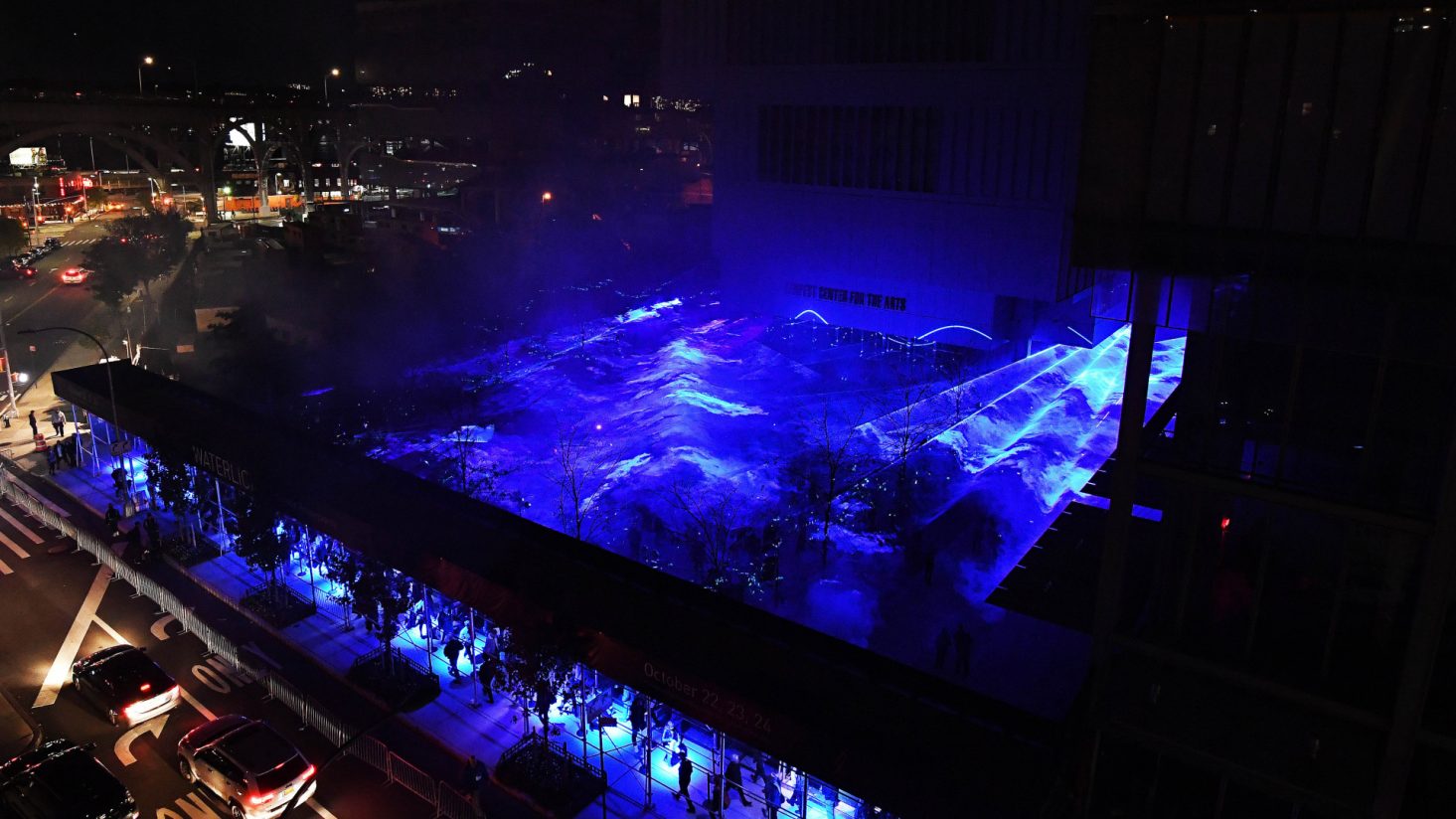Waterlicht: Virtual Light Installation Staging Essence of Water
Dutch artist Daan Roosegaarde blends an aesthetically appealing virtual installation into a historically relevant context to create a sense of awareness about the impact of climate change while reminding us about the innovation and power of water. By Mubeena Mohammad Ali
The Waterlicht experience in the spatial environment is truly a treat for the eyes. The oceanic wavy texture by the blue LED light and lenses on smokey atmosphere inspired by wind and rain is a perfect combination of technology, space, and people, haunting the spectators on the consequences of rising water levels due to global warming. This was meant to be an alert for countries participating in the COP26, a global summit that was recently conducted in Glasgow by the UN climate change conference.
Roosegaarde’s site-specific artwork gained global attention with its presence around the world; conducting the artwork in the Netherlands, London, Paris, New York, Toronto, Dubai, and Fremantle. The curator himself has bagged several international recognitions like Best lighting environment design in China, LIT 2017 lighting designer of the year at the USA, Global future design awards 2019, Winner of IES NYC lumen award New York 2020.
The artist’s prophecy portrayed in a virtual flooded space convinces the onlookers to maintain a sustainable way of life and raises a question on how as a society, we could bring a solution to recover nature and stabilise the water margins. The show is a gentle reminder of the importance of water, and how it has become a medium for the livelihood of mankind. It also shows how ocean life is flawed due to the warming in polar regions.
Roosegaarde refurbished the monumental light installation by producing a podcast for FUTUR 21- art industry culture, a media festival merging theory and research with artistic practice to revitalize the spectators to think about the future and narrate the destructive and creative power of water. The focus of the media festival binds on four thematic complexes sustainability, climate crisis, the impact of digitalisation, and importance in growth and consumption. Dated from November 2021 – April 2022, the aspect of the festival depends on a triad of Digital artwork, light installation, and spatial projects.
The latest project of Studio Roosegaarde’s aims to impulse a new chapter of Industrial culture by pumping water to utilise heat energy contained in underground water. Lack of constant pumping of groundwater resulted in a flooded lake of 90 km. Located at Peter-Behrens-Building in Oberhausen known as Germany’s Detroit, Waterlicht has considered the context’s history as a strong foundation for transforming the ideas of future vision into reality. The sunken depth of 25 meters in the region once dominated with coal mining, blast furnace, gasometer, and winding tower transitioned into a cultural platform.
Surrounded by the water of rivers Mass and Waals, Loevestien Castle is the upcoming destination of Waterlicht. Roosegaarde’s imagination of the light installation on the historic fortress and medieval castle is simply a perfect triangle of art, culture, and heritage. Given the stability of the castle which depends on water, the artwork questions the rise and the profundity of water in the Netherlands and Loevestien. Climate change destructing the 650 years aged monumental structure, either causing floods or droughts due to the annual high water from both rivers. Locks and drainage systems are bearing the sheer balance for the 14th-century fortress encircled by water. Immersing the spectators into a culturally relevant space and enlightening the conservation of both land and water, Waterlicht in the Netherlands comes into fruition by March 2022. The artist’s work is in collaboration with “Thinking about water”, an exhibition with lectures and film screening to edify the significance of water.
“Waterlicht is an inspiration for the future: should we build floating cities, how much power can we generate from movement of water? Experience the Vulnerability and the power of living with water” asks Daan Roosegaarde.









